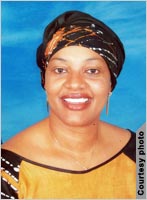
Dr. Yahia Abdul-Rahman, based in California, is a Shari’aa supervisor and founder of LARIBA System, an Islamic financing method. He also wrote a book called The Art of Islamic Banking and Financing.

Amjid Ali
The emergence of Islamic banking has been one of the most important trends in the financial world, serving the more than 1.5 billion Muslims, or 1 in 5 of the global population.
HSBC Amanah’s establishment in 1998 was a response to the burgeoning and genuine need for financial services that comply more closely with Muslims’ religious convictions and conform to the tenets of the Shariah (Islamic law). Muslims are now increasingly able to participate in the financial world without an economic penalty.
The critical test for any Islamic financial institution is the assurance that its products and transactions comply with Shariah. We established at an early stage an independent board of Shariah advisors from the most respected academic establishments with real commercial experience.
By providing the highest quality Islamic financial solutions, maintaining high ethical standards in our business relationships and investing in the future of our communities, we are committed to improving the lives of our Muslim customers worldwide.
For me personally, this development goes beyond product features. I recognize success depends on our ability to deliver in a way that demonstrates respect and understanding of the cultural differences, and of the importance of Islam, in the daily life of a Muslim.
The defining features of Islamic finance include the prohibition of interest, parameters for ethical investment and equitable relationship between contracting parties and the financing of goods and services to benefit the real economy. For instance, in a home financing, the bank would buy the property jointly with the customer. The property is held in trust by a third party. As the customer makes monthly payments during the term of the finance, his share in the property will increase as the bank’s share decreases. The bank makes a return by charging rent on the portion the customer does not own.
See also an Amjid Ali’s profile.

Yahia Abdul-Rahman
The American Muslim community started a grassroots effort relying only on their money to present Islamic banking in an inclusive way to people of all faiths in America. We developed the following strategic goals:
1. Change the name from the old “Interest-Free” to “Riba-Free.” This goal was accomplished. It took us almost 10 years.
2. Change the name from “Islamic Banking,” which may be exclusive to other faiths and give the wrong impression that this brand of banking is for Muslims only. We are promoting Community RF Banking. R stands for Ribit (Old Testament) and Riba (Qur’aan), while F stands for Free. We estimate that it will take us another 8 years to achieve that goal. We want to educate the public about the roots of interest/ usury prohibition in the Jewish Bible (Torah), the Christian Bible and the Qur’aan.
But we have already started that education process, with a pilot financing method called Lariba, in order to gain a track record for successful Islamic – RF – financing. (John Wiley published a book about the method called The Art of Islamic Banking and Financing.)
Today, we can offer all Americans the fruits of our 27 years of dedicated hard work of American Muslims who invested all they own to bring to bear the RF Banking System, a faith-based, socially responsible and ethical brand of banking.




 More perhaps than any other state, California’s answer has been “Bring it on!” Californians can call for new laws by “initiative” and pass them by referendum. Unlike other states that employ these procedures, California’s legislature cannot override the results. It instead remains busy trying to muster the two-thirds majority required to adopt a state budget.
More perhaps than any other state, California’s answer has been “Bring it on!” Californians can call for new laws by “initiative” and pass them by referendum. Unlike other states that employ these procedures, California’s legislature cannot override the results. It instead remains busy trying to muster the two-thirds majority required to adopt a state budget.